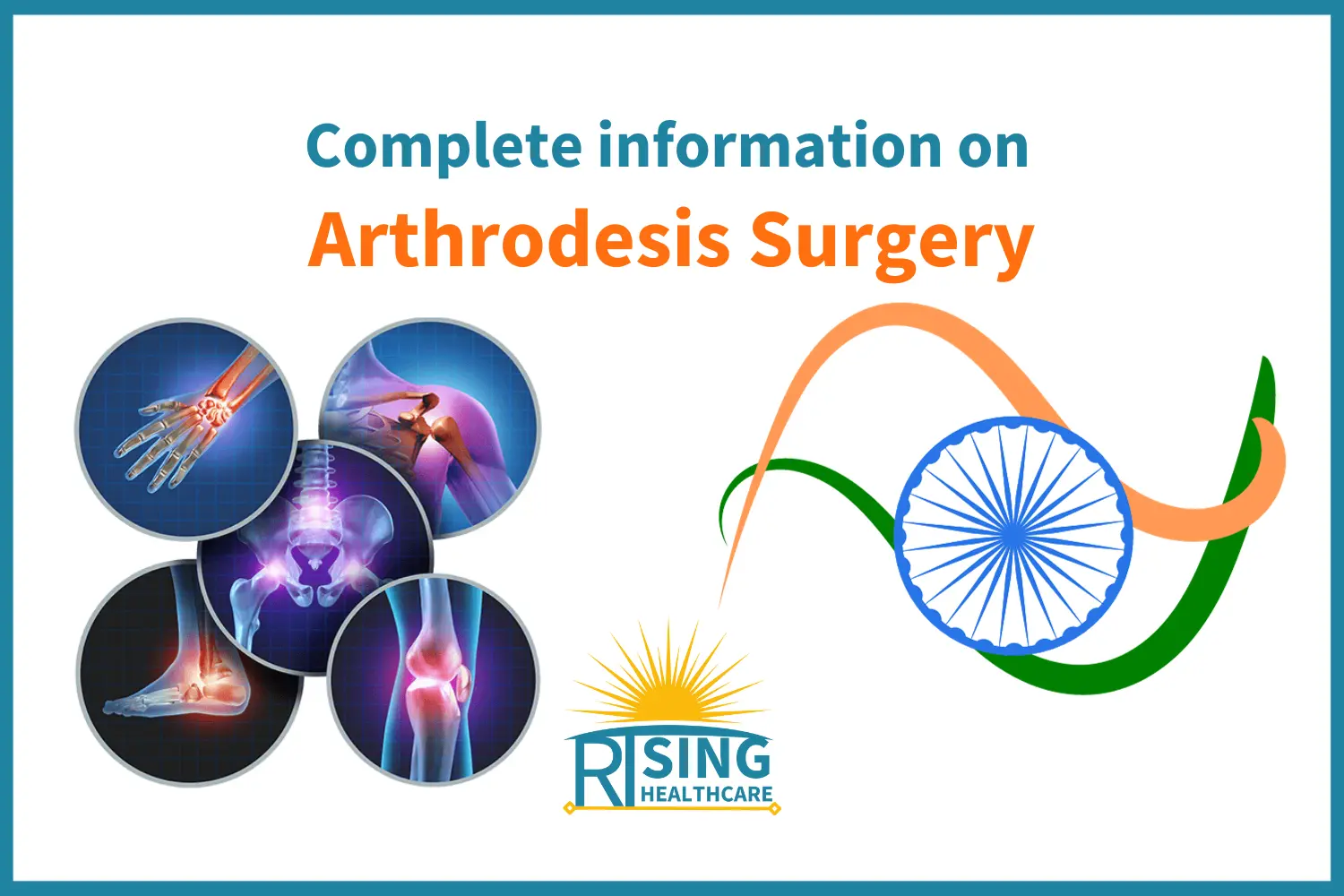
Understanding Arthrodesis Surgery: Types and Procedures
Introduction
Arthrodesis surgery, often referred to as joint fusion surgery, is a medical procedure that aims to stabilize and immobilize a joint by fusing two or more adjacent bones together. This surgical technique is used to alleviate pain, improve joint function, and correct deformities caused by various conditions, including arthritis, trauma, and spinal issues. In this comprehensive guide, we will explore the different aspects of arthrodesis surgery, with a particular focus on triple arthrodesis, spinal arthrodesis, and lumbar arthrodesis surgery.
The Basics of Arthrodesis Surgery
Arthrodesis surgery is a highly effective procedure that involves the fusion of bones to eliminate motion at a specific joint. This fusion is achieved by removing cartilage and using surgical hardware such as screws, plates, or rods to hold the bones in place until they grow together, creating a solid, immobile joint. The main objectives of arthrodesis surgery are:
- Pain Relief: Arthrodesis aims to alleviate pain caused by joint instability, inflammation, or degeneration.
- Joint Stabilization: By immobilizing the joint, arthrodesis enhances joint stability, preventing further damage and deformities.
- Correcting Deformities: The surgery can also correct deformities or abnormalities in the joint structure.
Triple Arthrodesis
Triple arthrodesis is a specific type of arthrodesis surgery that focuses on the fusion of three joints in the foot. It is commonly performed to address severe foot pain, deformities, or conditions like flatfoot (pes planus) and arthritis. Here’s what you need to know about triple arthrodesis:
What Does Triple Arthrodesis Address?
Triple arthrodesis addresses three key joints in the foot:
- Subtalar Joint: This joint connects the talus bone to the calcaneus (heel bone) and allows for side-to-side motion of the foot.
- Talonavicular Joint: Located in the middle of the foot, this joint connects the talus to the navicular bone.
- Calcaneocuboid Joint: This joint links the calcaneus to the cuboid bone.
When is Triple Arthrodesis Recommended?
Triple arthrodesis is recommended when conservative treatments such as physical therapy, orthotic devices, and pain medications fail to provide relief. Common reasons for undergoing triple arthrodesis include:
- Severe foot pain and deformity
- Advanced arthritis
- Correcting deformities caused by conditions like flatfoot
- Restoring normal foot function and alignment
The Triple Arthrodesis Procedure
- Anesthesia: The patient is administered either general or regional anesthesia to ensure a pain-free experience during surgery.
- Incision: A surgeon makes an incision on the side or bottom of the foot to access the affected joints.
- Joint Preparation: Cartilage is removed from the joint surfaces to expose the bone.
- Hardware Placement: Surgical hardware, such as screws and plates, is used to stabilize the bones in their corrected positions.
- Bone Healing: Over time, the bones gradually fuse together, creating a stable, immobile joint.
- Recovery: Recovery from triple arthrodesis surgery may take several weeks to months, and physical therapy is often recommended to regain strength and mobility.
The Benefits of TPI Injection
- Pain Relief: The primary benefit of TPI is pain relief. By directly targeting the source of pain, which is the trigger point, TPI can provide rapid relief from muscle-related discomfort.
- Improved Functionality: Pain can limit your range of motion and hinder daily activities. TPI can help restore functionality by reducing pain and muscle tension.
- Minimally Invasive: TPI is a relatively simple and minimally invasive procedure that doesn’t require surgery or prolonged recovery times.
- Customized Treatment: TPI allows for a customized treatment approach. The medication used in the injection can be tailored to the specific needs of the patient and their condition.
- Reduced Medication Dependency: For those who have been relying on pain medications, TPI can offer an alternative that reduces the need for long-term medication use.
Spinal Arthrodesis
Spinal arthrodesis is a surgical procedure that focuses on stabilizing the spine by fusing two or more vertebrae together. This type of surgery is commonly used to treat various spinal conditions, including degenerative disc disease, spinal deformities, and spinal instability. Let’s delve into the details of spinal arthrodesis:
When is Spinal Arthrodesis Necessary?
Spinal arthrodesis may be recommended for several reasons, including:
- Spinal instability due to injury or degeneration
- Correction of spinal deformities like scoliosis or kyphosis
- Relief from chronic back pain
- Treatment of spinal tumors or infections
- Stabilization following spinal surgery
Types of Spinal Arthrodesis
There are different types of spinal arthrodesis procedures, depending on the specific condition being treated. Some common types include:
- Lumbar Fusion: This involves fusing two or more vertebrae in the lumbar (lower back) region. Lumbar arthrodesis is particularly effective in treating conditions like herniated discs and spinal stenosis.
- Thoracic Fusion: Thoracic arthrodesis targets the middle portion of the spine (thoracic region) and is often used to treat conditions such as fractures and deformities.
- Cervical Fusion: Cervical arthrodesis addresses the neck region (cervical spine) and is performed to relieve pain and stabilize the neck due to conditions like cervical disc herniation and spinal cord compression.
The Spinal Arthrodesis Procedure
- Anesthesia: Patients are given general anesthesia to ensure they are comfortable during the surgery.
- Incision: A surgeon makes an incision over the affected area of the spine, providing access to the vertebrae.
- Bone Grafting: In spinal arthrodesis, a bone graft is often used to facilitate fusion. This graft can be harvested from the patient’s own body (autograft) or obtained from a donor (allograft).
- Hardware Placement: Metal implants such as screws, rods, and cages are used to hold the vertebrae in the desired position until they fuse together.
- Healing and Fusion: Over time, the bone graft and vertebrae fuse, creating a stable spinal column.
- Recovery: Recovery from spinal arthrodesis can be lengthy, involving post-operative pain management and physical therapy to regain strength and mobility.
Lumbar Arthrodesis Surgery
Lumbar arthrodesis surgery specifically targets the lumbar spine, which comprises the lower back region. This procedure is commonly performed to address chronic lower back pain, instability, and other lumbar spine-related issues. Let’s explore lumbar arthrodesis surgery in more detail:
When is Lumbar Arthrodesis Surgery Recommended?
Lumbar arthrodesis surgery may be recommended for the following conditions:
- Degenerative Disc Disease: When the intervertebral discs in the lumbar spine degenerate and cause pain or instability.
- Spondylolisthesis: A condition where one vertebra slips over another, causing discomfort and spinal misalignment.
- Herniated Discs: When the soft inner core of a disc bulges or leaks out, potentially compressing nerves and causing pain.
- Spinal Stenosis: A narrowing of the spinal canal, leading to pressure on the spinal cord and nerves.
Types of Lumbar Arthrodesis Procedures
There are different approaches to performing lumbar arthrodesis, including:
- Posterior Lumbar Fusion (PLF): In PLF, the surgeon accesses the spine from the back and fuses the vertebrae together using hardware and bone grafts.
- Anterior Lumbar Interbody Fusion (ALIF): ALIF involves an anterior (front) approach, where the surgeon accesses the lumbar spine through the abdomen. This approach allows for the removal of a damaged disc and its replacement with a bone graft or interbody cage.
- Transforaminal Lumbar Interbody Fusion (TLIF) and Lateral Lumbar Interbody Fusion (LLIF): These approaches involve accessing the spine from the side and are used to treat various lumbar conditions.
The Lumbar Arthrodesis Procedure
- Anesthesia: Patients receive general anesthesia to ensure a pain-free surgical experience.
- Incision: The surgeon makes an incision at the chosen access point, which can be the back, abdomen, or side.
- Preparation: Any damaged or degenerated discs are removed, and the vertebrae are prepared for fusion.
- Bone Grafting: Bone graft material, often taken from the patient’s own body, is placed between the vertebrae to promote fusion.
- Hardware Placement: Screws, rods, and other hardware are used to stabilize the spine.
- Healing and Fusion: Over time, the bone graft and vertebrae fuse together, providing stability and pain relief.
- Recovery: Recovery from lumbar arthrodesis surgery may involve physical therapy, pain management, and restrictions on certain activities to support healing.
Conclusion
Arthrodesis surgery is a valuable medical procedure that can significantly improve the quality of life for individuals suffering from joint pain, deformities, and spinal issues. Whether it’s triple arthrodesis, spinal arthrodesis, or lumbar arthrodesis surgery, these procedures offer effective solutions for addressing a wide range of musculoskeletal problems. If you or a loved one is considering arthrodesis surgery, consult with a qualified healthcare professional to determine the most appropriate treatment plan tailored to your specific needs.

